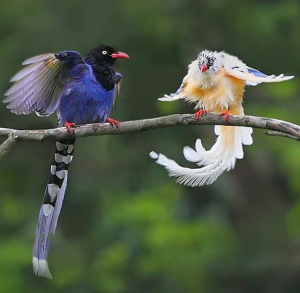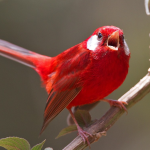
A bird with beautiful blue and black colouring and a long, luxurious tail with feathers that resemble fans!

The Taiwan blue magpie, commonly known as the Taiwan magpie or Formosan blue magpie (Urocissa caerulea). They have a tail that is longer than the European Magpie but are around the same size. Its length is between 64 and 65 centimetres, with the wing measuring 18 to 21 centimetres and the tail 40 centimetres long. It has a red beak and legs, iridescent yellow eyes, and black head, neck, and breast.


The bird’s remaining feathers are a deep shade of dark blue to purple. On the wings and tail are white patterns as well.
Male and female appearances are nearly identical.

Broadleaf woods between 300 and 1,200 m (980 and 3,940 ft) above sea level are where Taiwan Blue Magpies prefer to reside.

Taiwan Blue Magpies are well-known scavengers and omnivores who enjoy eating plants, fruits, seeds, rodents, snakes, and tiny insects. They do, however, like fruit, with papayas and wild figs topping the list. It has been seen that they place leftovers on the ground and cover them with leaves so they may be retrieved later. They may store food in the branches or leaves.

Formosan Birds called blue magpies are monogamous. Typically, weeds and woodlands are where they build their nests. From March through April, rendezvous places are mostly constructed on higher branches. The nest is made of weeds and twigs and has a bowl-like form. Males assist in feeding and constructing the nest, while females incubate the eggs. Typically, a nest has 3–8 eggs. The colour of eggs is an olive green with dark brown markings. Hatching has a success rate of 78.3% and takes 17–19 days. Per nest, this will result in 3–7 chicks. Strong nest defence behaviour can be observed in blue magpies. They will ruthlessly assault intrusions until they flee.


The species is now considered to be of Least Concern on the IUCN Red List of Threatened Species since it is widespread across its range. The Formosan Blue Magpie, however, has been classified as a rare and important species because of its endemism.

Watch and hear what this bird is saying down below:

